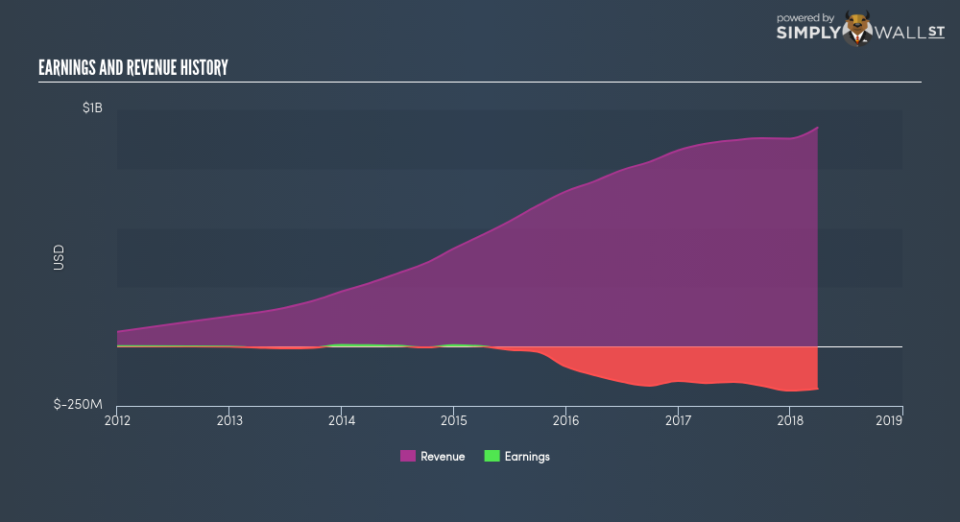With A -15.55% Earnings Drop, Did Tableau Software Inc (NYSE:DATA) Really Underperform?

When Tableau Software Inc’s (NYSE:DATA) announced its latest earnings (31 March 2018), I wanted to understand how these figures stacked up against its past performance. The two benchmarks I used were Tableau Software’s average earnings over the past couple of years, and its industry performance. These are useful yardsticks to help me gauge whether or not DATA actually performed well. Below is a quick commentary on how I see DATA has performed. Check out our latest analysis for Tableau Software
How Did DATA’s Recent Performance Stack Up Against Its Past?
DATA is loss-making, with the most recent trailing twelve-month earnings of -US$177.38m (from 31 March 2018), which compared to last year has become more negative. Furthermore, the company’s loss seem to be growing over time, with the five-year earnings average of -US$66.08m. Each year, for the past five years DATA has seen an annual increase in operating expense growth, outpacing revenue growth of 31.70%, on average. This adverse movement is a driver of the company’s inability to reach breakeven. Scanning growth from a sector-level, the US software industry has been growing its average earnings by double-digit 13.27% in the prior year, and 12.58% over the previous five years. This shows that any uplift the industry is deriving benefit from, Tableau Software has not been able to realize the gains unlike its average peer.
Since Tableau Software is loss-making, with operating expenses (opex) growing year-on-year at 25.00%, it may need to raise more cash over the next year. It currently has US$865.65m in cash and short-term investments, however, opex (SG&A and one-year R&D) reached US$991.86m in the latest twelve months. Although this is a relatively simplistic calculation, and Tableau Software may reduce its costs or raise debt capital instead of coming to equity markets, the outcome of this analysis still gives us an idea of the company’s timeline and when things will have to start changing, since its current operation is unsustainable.
What does this mean?
Though Tableau Software’s past data is helpful, it is only one aspect of my investment thesis. Companies that incur net loss is always difficult to predict what will happen in the future and when. The most valuable step is to examine company-specific issues Tableau Software may be facing and whether management guidance has regularly been met in the past. I recommend you continue to research Tableau Software to get a more holistic view of the stock by looking at:
Future Outlook: What are well-informed industry analysts predicting for DATA’s future growth? Take a look at our free research report of analyst consensus for DATA’s outlook.
Financial Health: Is DATA’s operations financially sustainable? Balance sheets can be hard to analyze, which is why we’ve done it for you. Check out our financial health checks here.
Other High-Performing Stocks: Are there other stocks that provide better prospects with proven track records? Explore our free list of these great stocks here.
NB: Figures in this article are calculated using data from the trailing twelve months from 31 March 2018. This may not be consistent with full year annual report figures.
To help readers see pass the short term volatility of the financial market, we aim to bring you a long-term focused research analysis purely driven by fundamental data. Note that our analysis does not factor in the latest price sensitive company announcements.
The author is an independent contributor and at the time of publication had no position in the stocks mentioned.

 Yahoo Finance
Yahoo Finance 
